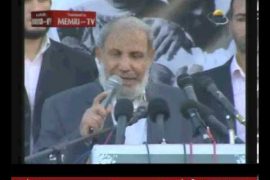1) At Tablet Magazine, Armin Rosen and Liel Leibovitz document “Connections between an American charity and Hamas, PFLP, and Palestinian Islamic Jihad”.
“Over the past decade, as the prospects of peace between Israelis and Palestinians became ever slimmer, there has been a growing attention to—and, in some quarters, acceptance of—the Boycott, Divestment, and Sanctions movement targeting Israel, or BDS. Those drawn to the cause have likely come across the US Campaign for Palestinian Rights, a Virginia-based nonprofit organization that serves as the American umbrella group of the BDS movement and is arguably the most prominent promoter of BDS in the United States. The US Campaign, which is officially called Education for Just Peace in the Middle East, coordinates the efforts of 329 different pro-BDS organizations “working to advocate for Palestinian rights and a shift in US policy … bound by commonly shared principles on Palestine solidarity as well as our anti-racism principles,” according to the group’s website.
But as Tablet confirmed, the group also helps facilitate tax-exempt donations to a Palestinian coalition that includes Hamas, Palestinian Islamic Jihad, the Popular Front for the Liberation of Palestine, and other groups the U.S. State Department designates as terror organizations.”
2) Jonathan Spyer discusses “Iran’s response: the ‘Strategy of Tension’“.
“The United States and its allies are currently in the opening stages of the pursuit of a strategy to contain and roll back the Islamic Republic of Iran from a number of points in the Middle East. This strategy is set to include an economic element (renewed sanctions, a military aspect (involving Israeli action against Iran in Syria, and the Saudi/UAE campaign against the Houthis in Yemen, and a primarily political effort (in Iraq and to a lesser extent in Lebanon).
Iran can be expected to respond with a counter-strategy of its own, designed to stymy and frustrate western and allied efforts. What form will this Iranian response take? What assets does Iran possess in the furtherance of this goal?”
3) NGO Monitor has published a report on grants given to Israeli NGOs (some of which are regularly quoted and promoted in BBC content) between the years 2012 and 2016.
“Given the central role played by politicized non-governmental organizations (NGOs) in the public human rights discourse, transparency in NGO funding is required in order to bolster informed debate. The following analysis presents all grants reported annually by 39 Israeli NGOs in the years 2012-2016, organizing data according to the amount of the grant, the identity of the donor, the source of the grant (private, governmental, or non-transparent/ unclear) and whether the donor is recognized as a government or from church groups. […]
Of the 39 groups examined, 28 receive more than 50% of their funding from governments. The three NGOs receiving the highest share of foreign government funding are Akevot (100%), Terrestrial Jerusalem (99.66%), and Who Profits (94.49%).
25 governmental and intergovernmental entities – including the EU, UN, and the Human Rights and International Humanitarian Law Secretariat (see below) – fund these 39 Israeli NGOs. Germany is the largest donor, providing NIS 49,688,588, followed by the EU and Norway.”
4) At the Algemeiner, Efraim Karsh explains why “In Gaza, It’s Not the Economy, Stupid“.
“…at the time Arafat launched his war of terrorism in September 2000, Palestinian income per capita was nearly double Syria’s, more than four times that of Yemen, and 10% higher than Jordan’s — one of the better-off Arab states. Only the oil-rich Gulf states and Lebanon were more affluent.
By the time of Arafat’s death in November 2004, his terrorism war had slashed this income to a fraction of its earlier levels, with real GDP per capita some 35% below the pre-September 2000 level, unemployment more than double, and numerous Palestinians reduced to poverty and despondency. And while Israel’s suppression of the terrorism war generated a steady recovery, with the years 2007-2011 even recording an average yearly growth above 8%, by mid-2014 a full blown recession had taken hold, especially in the Gaza Strip.
Indeed, apart from reflecting the West Bank’s basic socioeconomic superiority vis-à-vis Gaza, the widening gap between the two areas during the Oslo years (the difference in per capita income shot up from 14% to 141%) was a direct corollary of Hamas’ transformation of the Strip into an unreconstructed terrorist entity, in contrast to the West Bank’s relative tranquility in the post-intifada years.”



